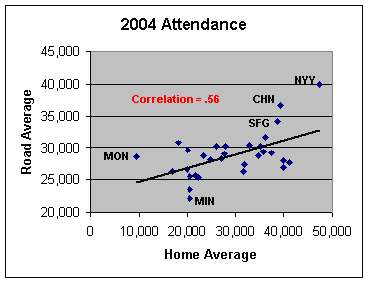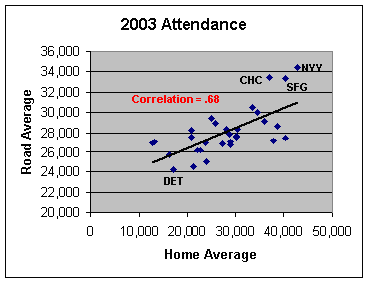As much as it annoyed me, being a Pistons fan, to see that coverage of the NBA Finals was focused far more on the Lakers’ demise (MEDVEDENKO TO TEST FREE AGENT WATERS!) as it was on Detroit’s ascent (blue team wins championship in five games), there’s a lot to be said for the presence of a villain. The Lakers have been so good for so long–so annoyingly, purple-and-goldenly good–for so long, that it was one hell of a story to see them go down to defeat, even if it came at the hands of a largely unfamiliar and anonymous team whose low-scoring style made them the basketball equivalent of the 1906 Cubs.
Lest you accuse me of some sort of Midwestern provincialism, it’s worth noting that the rest of the country agreed–the Finals were the highest-rated in years. David Stern agreed too, and it was refreshing to hear him confess, during a halftime interview, that the presence of a franchise like the Lakers was good for his league, drawing lots of eyeballs and putting lots of butts in the seats.
Now that baseball has the sports stage more or less to itself–the NHL finals concluded two weeks ago, with the Dayton (OH) Green Hornets defeating the Saskatoon Moosecatchers in a thrilling seven-game series–it’s worth considering whether a similar phenomenon manifests itself in our preferred sport. It is interesting to note, for example, that the Yankees are on pace to draw more than 3.2 million fans this year–in their road games alone. The Cubs are averaging a record-setting 40,000 per game at Wrigley Field this year–and 37,000 per game at not-so-friendly confines.
In fact, if we compare every team’s home and road attendance, the correlation is quite strong. Here are the data thus far for 2004:

Even though the season is still young enough that the schedule has not had time to come into its relative state of balance (the Cubs have already played the Cardinals 11 times, for example, and the Brewers zero), a correlation of .56 is quite meaningful. If we take a look at a full season’s worth of data–like last year’s, for example–the relationship is even stronger, with a correlation coefficient of .68:

Should any of this be surprising? Well, it depends on who you talk to. MLB’s argument for greater revenue sharing rested largely on the assumption that teams do not have a lot of responsibility for their own financial position. A team’s home attendance is supposed to be dictated, for example, by things like its MSA population and the number of taxpayer-financed Ferris Wheels that it has in its stadium, and not by something commonsensical like how well it plays, or how many stars it has that people will pay a premium to watch play.
Take one look at perfectly simple assortment data like this, however, and it’s easy to see just how specious that line of argument is. The same teams that draw well at home draw well on the road, because as much as PNC Park might be preferable to Olympic Stadium, baseball fans, more so than their counterparts in other sports, make their purchase decisions first and foremost based on team quality and appeal.
Moreover, the notion that the presence of a few dominant franchises like the Yankees is bad for the league is also suspect. The sort of fans who can make the difference between a year in the black and a year in the red are those fans who come out to just a handful of games a year, and it’s helpful for those fans to have some dates on the schedule involving games against teams that are particularly loveable or detestable. One wonders, for example, whether the White Sox attendance problems aren’t brought about in part by playing an unbalanced schedule against a division full of unexciting, personality-starved opponents.
In the past, we’ve trotted out proposals for equitable, formula-driven attempts at revenue sharing, and it seems that road attendance could play a role in establishing appropriate values. If the Devil Rays can’t draw fans at home, it could be for any number of reasons, some of which they might warrant economic relief. If they also can’t draw fans on the road, it’s probably because their team stinks. Conversely, a team like the Yankees contributes substantially to the league’s bottom line by packing a stadium full of fans, 81 times a year, that would love nothing better than to see Derek Jeter and his .260-hitting ass die a slow and painful death.
Thank you for reading
This is a free article. If you enjoyed it, consider subscribing to Baseball Prospectus. Subscriptions support ongoing public baseball research and analysis in an increasingly proprietary environment.
Subscribe now